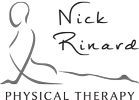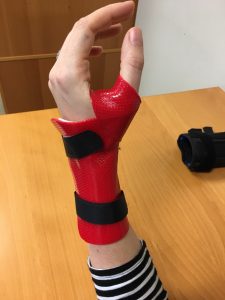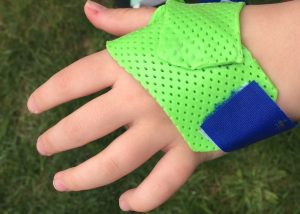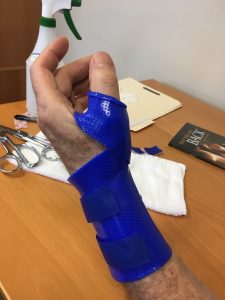Getting together for exercise or going alone? McKenzie Institute International
https://www.facebook.com/140277053186246/posts/254138911800059/
More (formerly Mechanical Diagnosis and Therapy of Portland, PC)
(formerly Mechanical Diagnosis and Therapy of Portland, PC)
https://www.facebook.com/140277053186246/posts/254138911800059/
MoreThese beautiful summer evenings are perfect for golfing! If you are struggling getting back on the green, let us know! We would be happy to help you get back to playing outside and enjoying this nice weather. Avoiding movement can actually increase your osteoarthritis pain.
Read this article to learn more about the importance of exercise in reducing pain levels:
https://www.sciencedaily.com/releases/2018/04/180428145108.htm”
Margo Burette DPT
Morehttps://www.facebook.com/mdtclinics/posts/10156302832577442
Morehttps://www.facebook.com/mdtclinics/posts/10156258301362442
More


Have you self diagnosed… gone down the medical equipment aisle, picked out a brace you thought would help only to find you are still in pain months later? One size does not fit all. Correctly knowing what you are splinting and why makes all the difference. There is no reason to live with hand pain, when all it takes is a splint made just for you by Natasha Rinard OT. to get immediate relief!
MoreWhile treating a patient at the clinic last week, I was struck with her bravery. She described having previously sought physical therapy treatment for her injury at a different clinic. She had the discouraging experience of being treated by a different person at each appointment, and felt she had to explain her injury again and again. She says she was given a “one size fits all” exercise handout and when she was not successful with the exercises, no adaptations were offered to her.
Amazingly, this lady had the courage to self-advocate for better care. How many like her would be stranded at an impasse? She had the good fortune of having a friend who recommended the Nick Rinard Physical Therapy team to her. I’m happy to report that she is excelling here and is now ready to continue independently much sooner than expected.
Nick Rinard Physical Therapy is a specialty type of physical therapy which helps most people. The methods we use are the most scientifically valid in all of physical therapy today; and all of our therapists are trained in this specialty of mechanical diagnosis and treatment. From the patient’s perspective, you will undergo a thorough evaluation designed to find the true cause of your pain or symptoms. The main aim of the evaluation is to determine whether the pain is “mechanical” or “non-mechanical.”
If it is mechanical, and it is treatable, then you will start a corrective program on day one that is custom designed to suit your needs. We also equip all of our patients with a home exercise program and the tools they need to prevent this problem from recurring in the future.
You deserve to be individually evaluated, treated, and supported in a plan of care that is scientifically valid and effective. If you have had a disappointing physical therapy experience at another clinic, we urge you to come see us and let us demonstrate the difference that our high quality, dedicated staff can make for you.
https://www.facebook.com/mdtclinics/posts/10156145467807442
More
Our world is getting older by the day. Our planet is currently inhabited by the greatest number of old people in recorded history. That’s right, “the number of people aged 65 years or over is increasing at a faster rate globally than the total population growth.” (Kaneda et al, 2011)
Our elderly population is a tribute to society’s prosperity and medical advancements. Shouldn’t we be celebrating the success of our medical breakthroughs that have allowed more and more people to surviving into their senior years? Sadly, instead of reverence for our elderly, a social phenomenon known as ageism is putting an ugly tarnish on those golden years. (Matthews, 2015)
What is ageism? Wikipedia defines ageism as: “stereotyping and discriminating against individuals or groups on the basis of their age.” The most devastating form of ageism is self-imposed. Here are some common examples of self-ageism phrases:
“When I was younger, I could have done that, but now…”
“I think I just hurt because it’s part of getting old and feeling my years.”
“I’m too old to learn something new. You just can’t teach an old dog new tricks.”
Ageism can lead people to resign to their injuries rather than seeking to heal from them. This resignation leads quickly to loss of independence, loss of mobility, social isolation, etc. The next time you hear yourself or a loved one make an ageism remark, I hope you will reply: “If you’re so old, you’re old enough to know better!”
Stop delaying recovery and healing, and get proactive. If these are your golden years, your health is precious! Protect yourself by getting the help you need in a timely manner. Nick Rinard Physical Therapy is here for you!
Slippery streets, short days, and increase stress can make winter a high-risk season for falls and injuries. How can you help prevent falls at home? One excellent way to avoid falls is to improve your strength and balance. Our team at Nick Rinard Physical Therapy is ready to help you!
Here are some helpful tips for falls prevention from CDC: https://www.cdc.gov/homeandrecreationalsafety/falls/adultfalls.html
